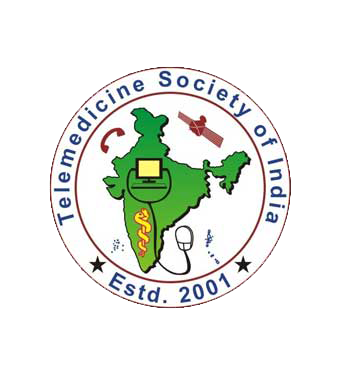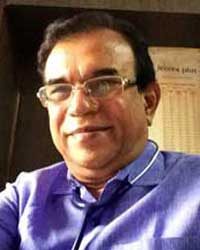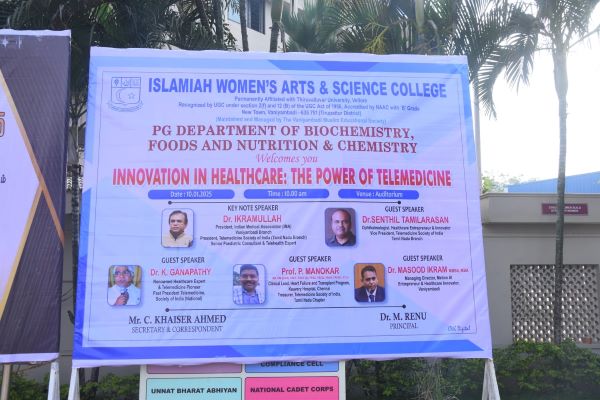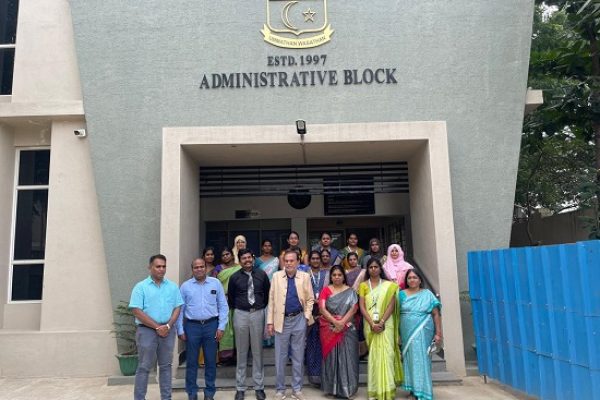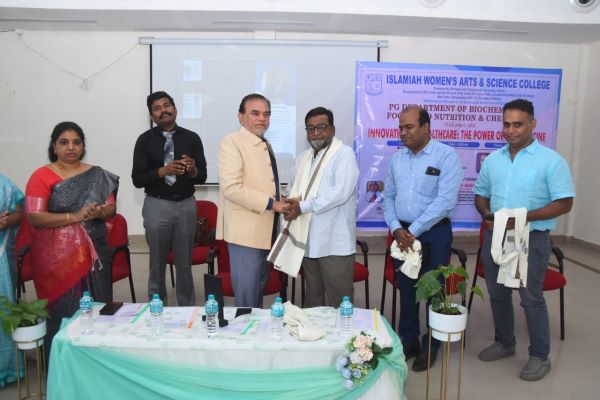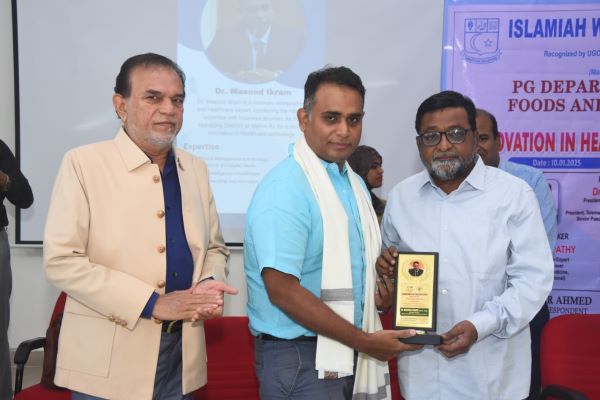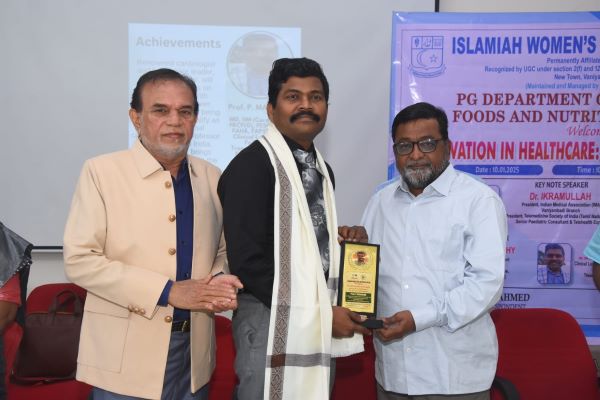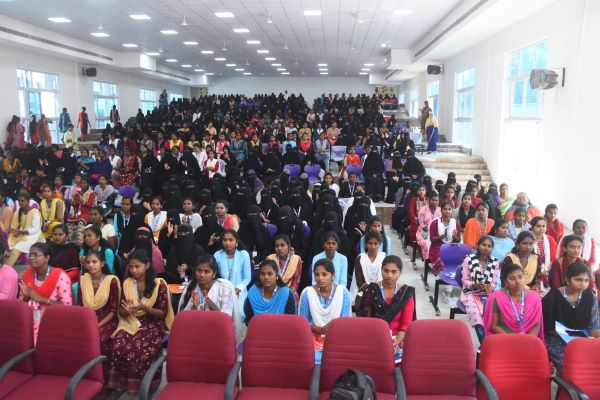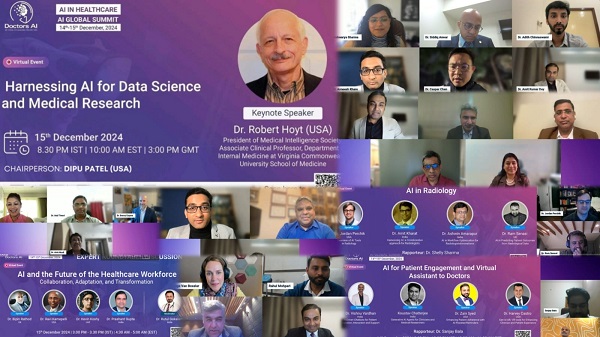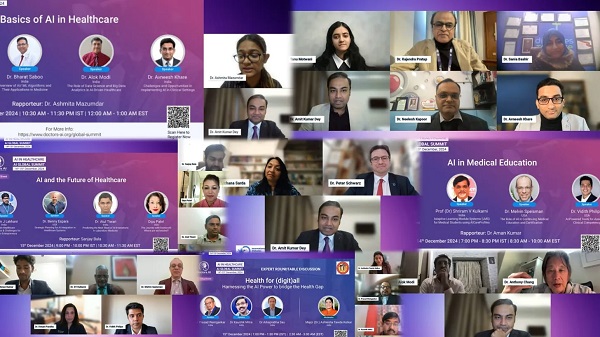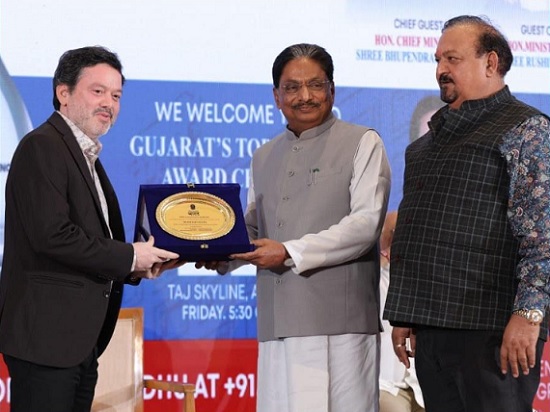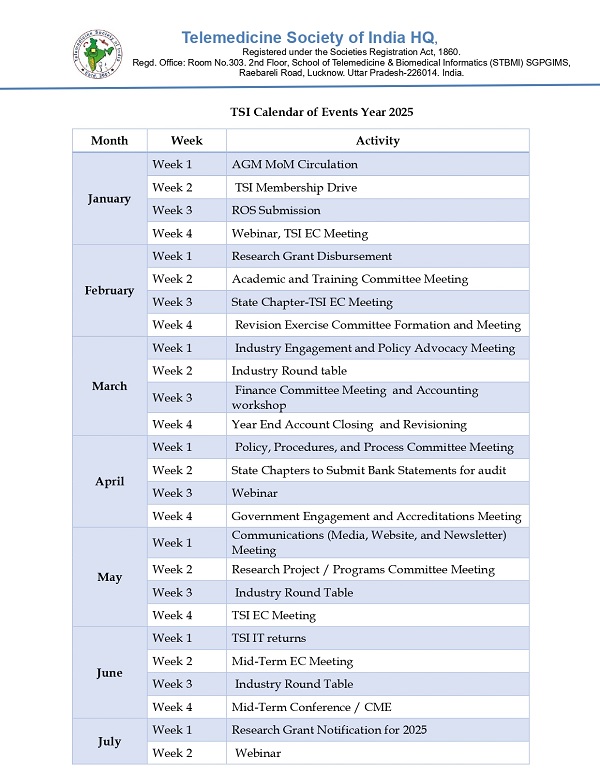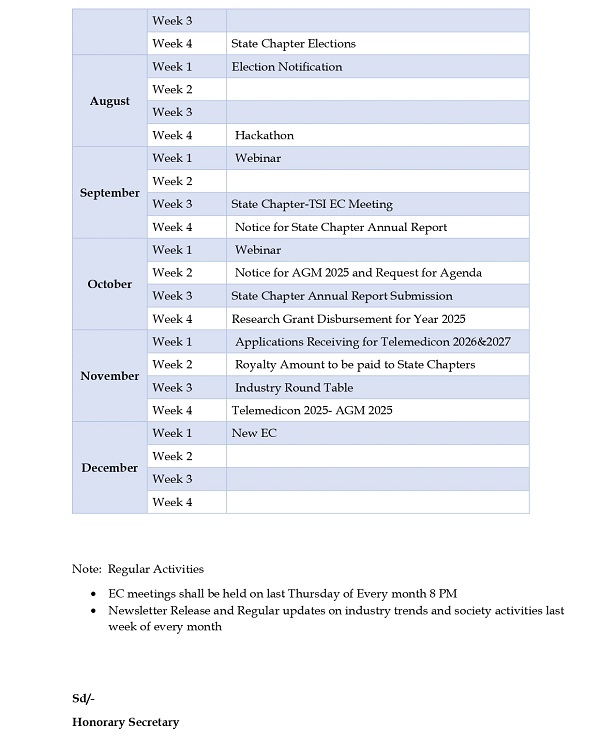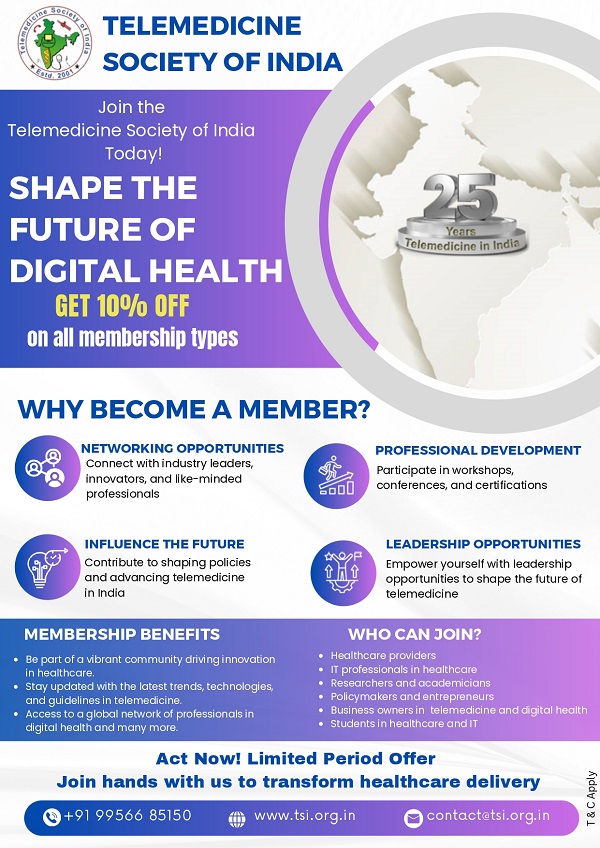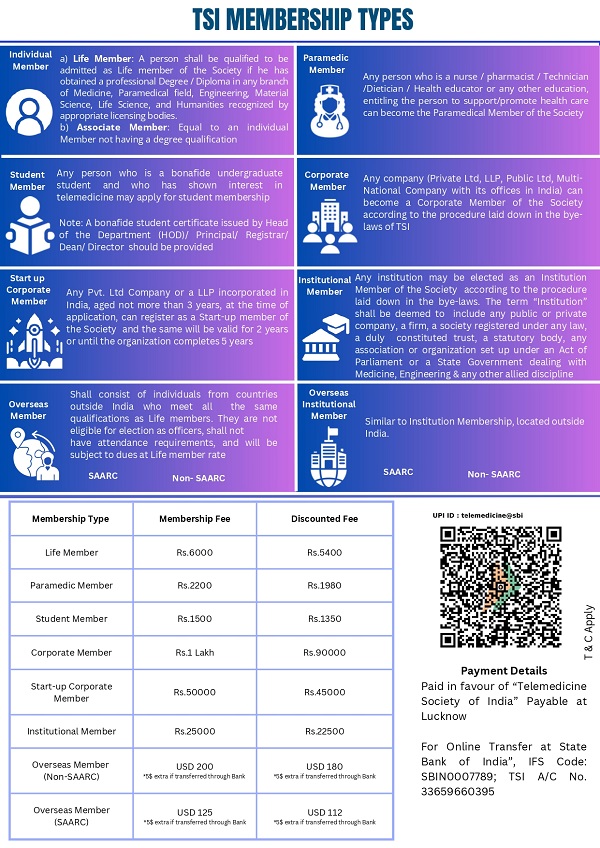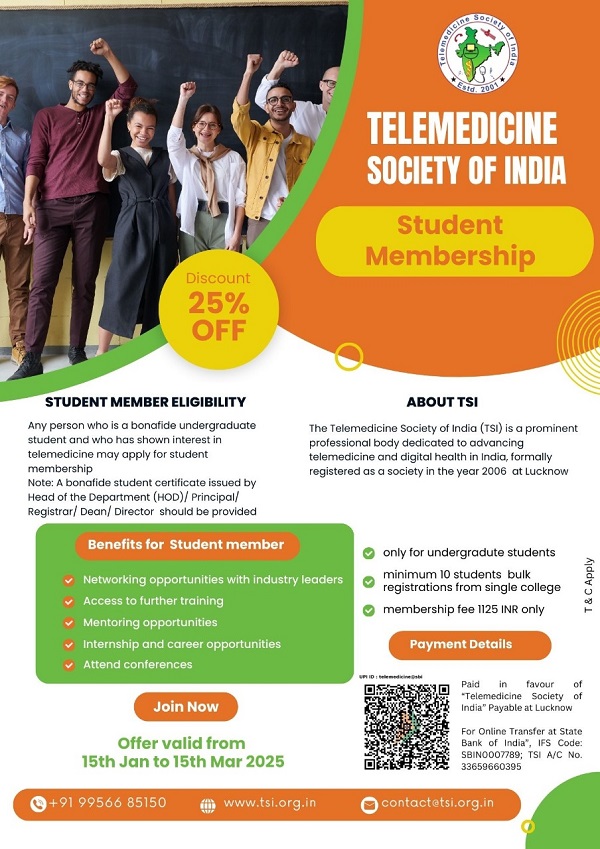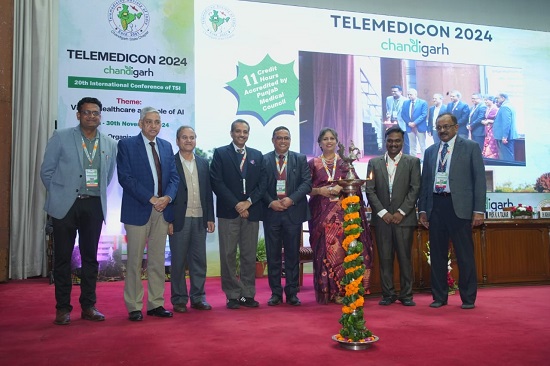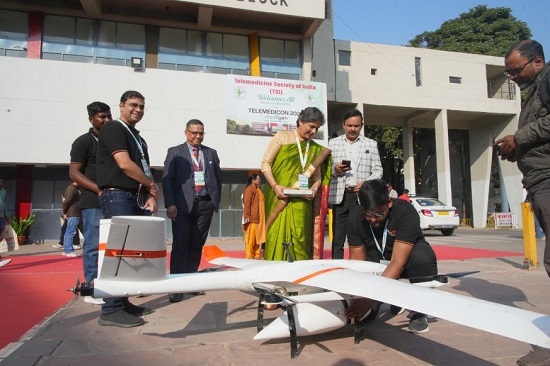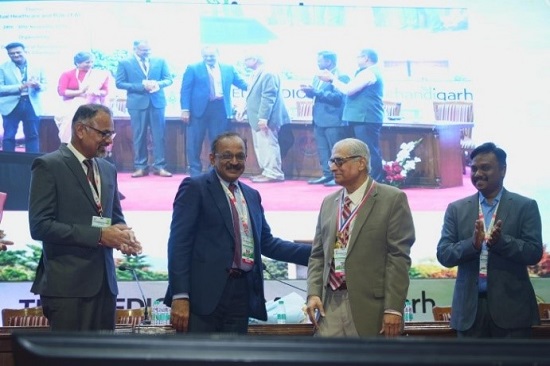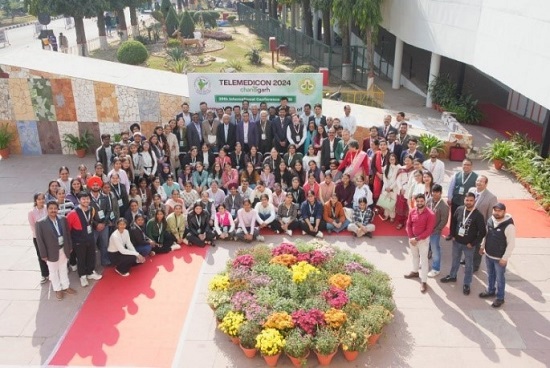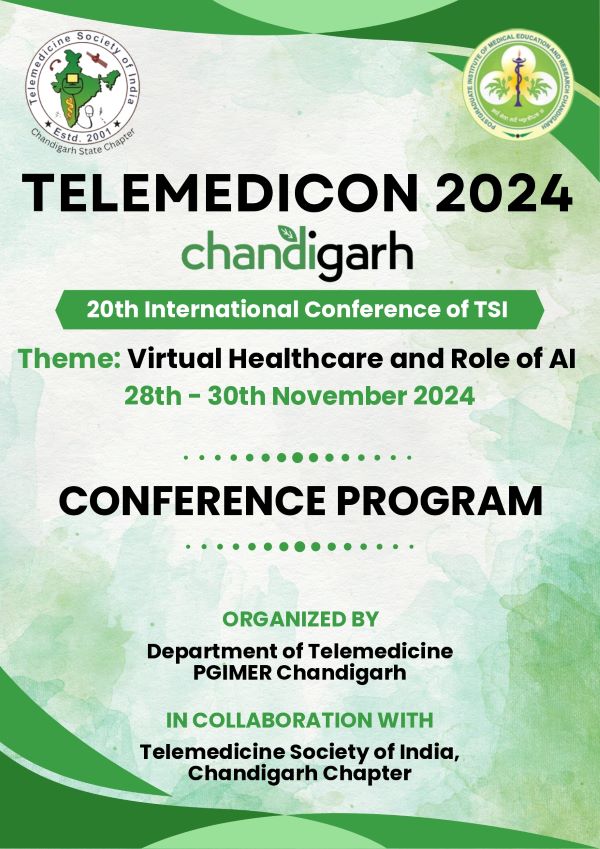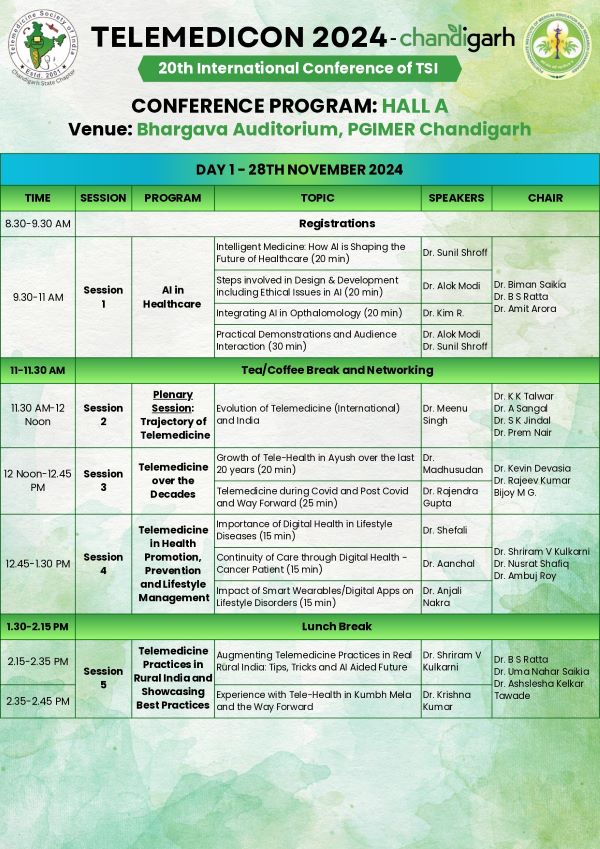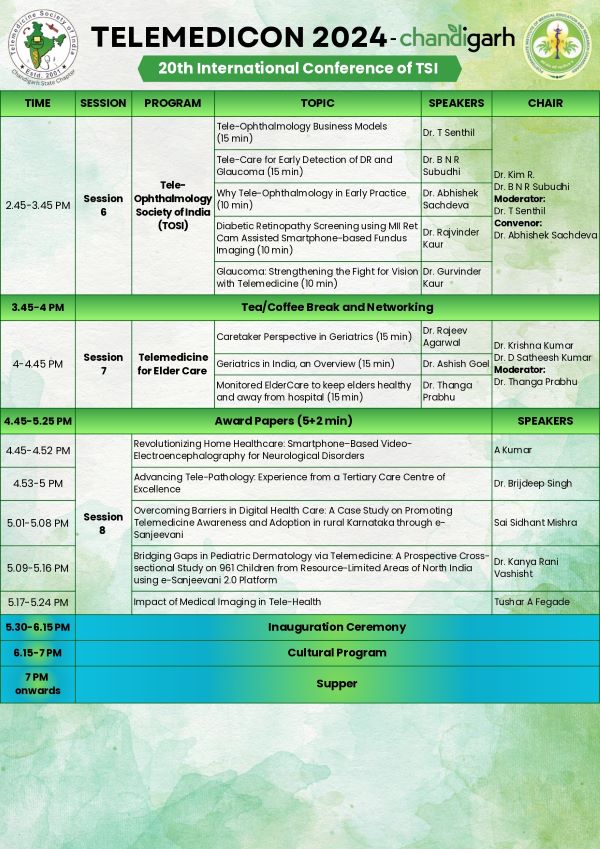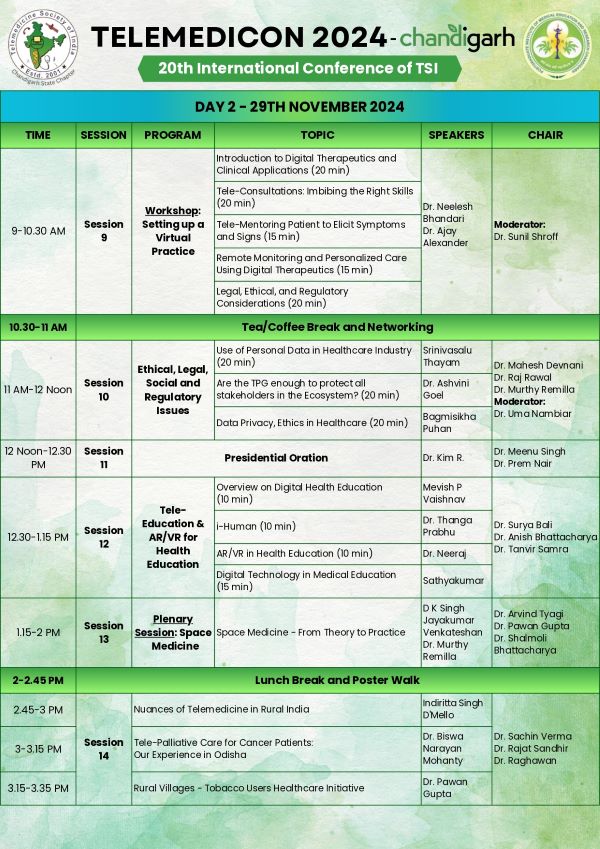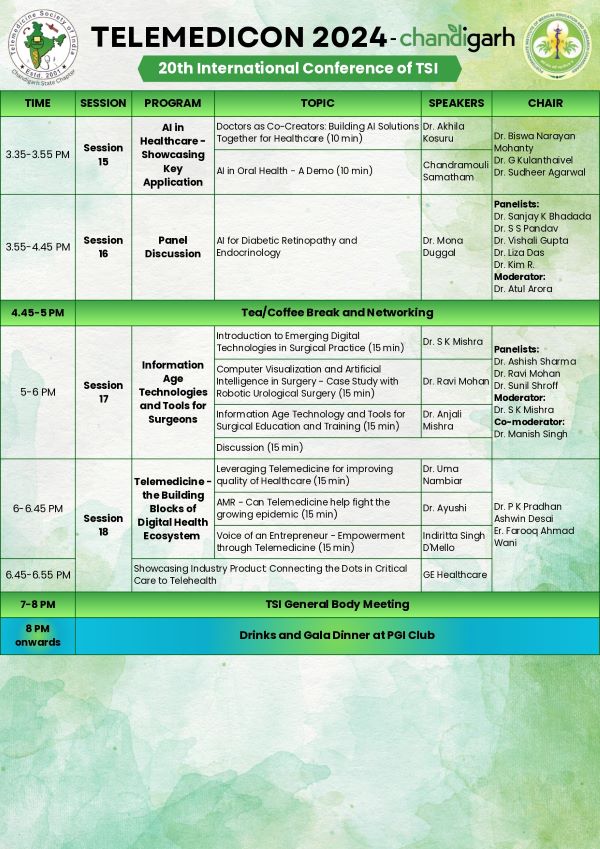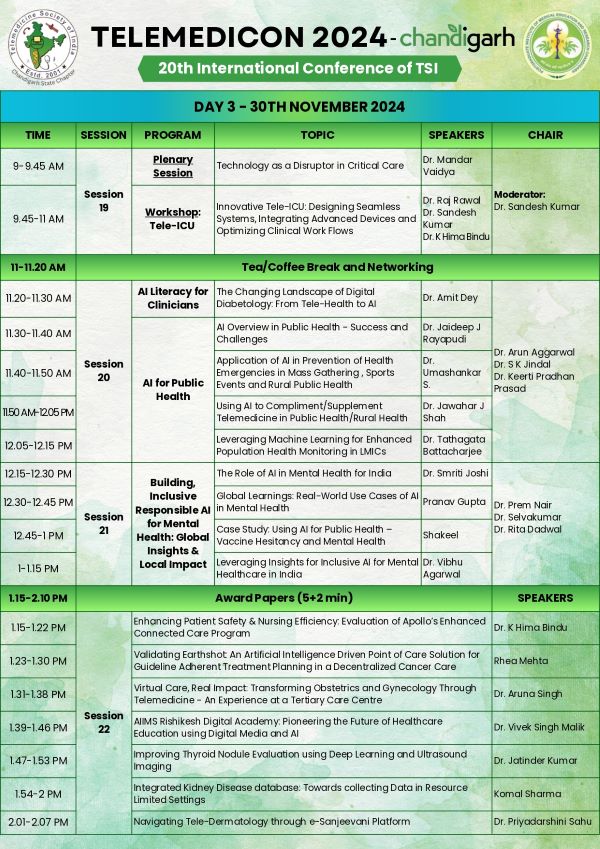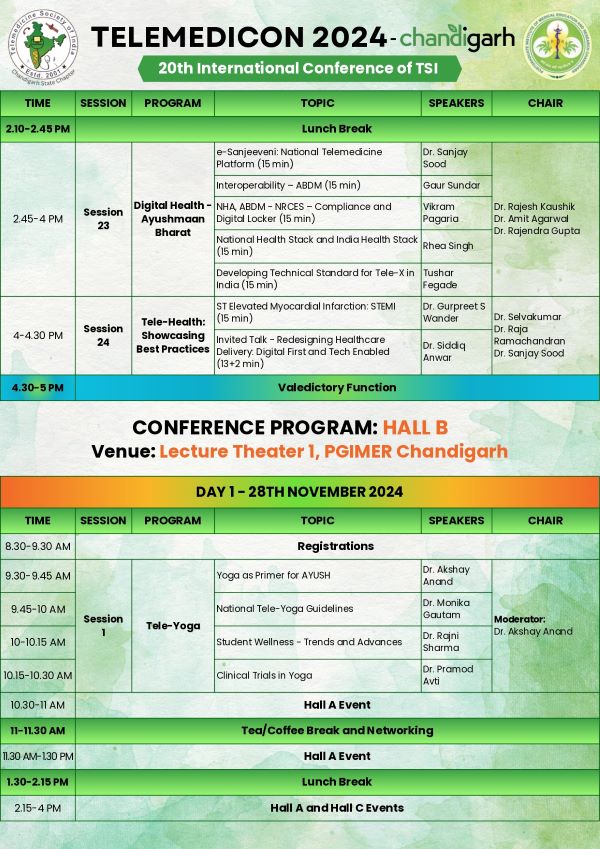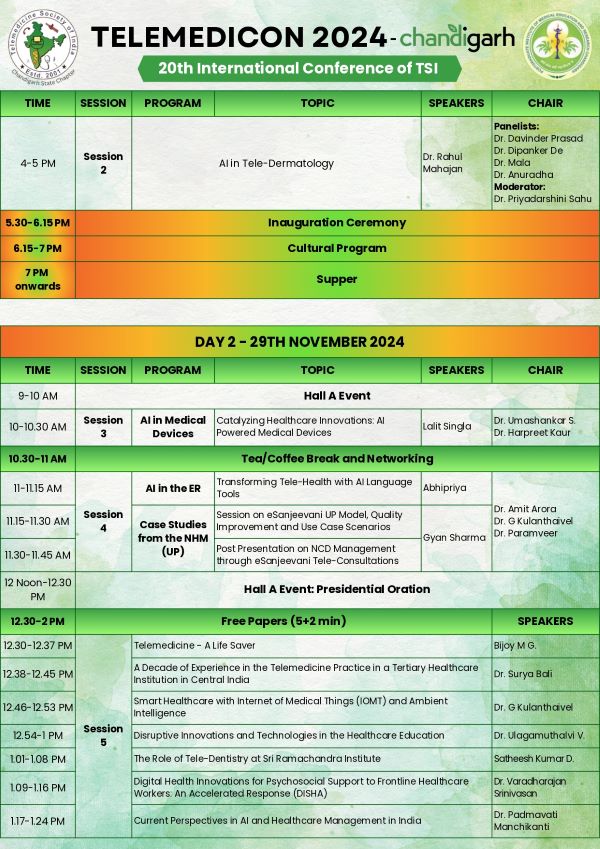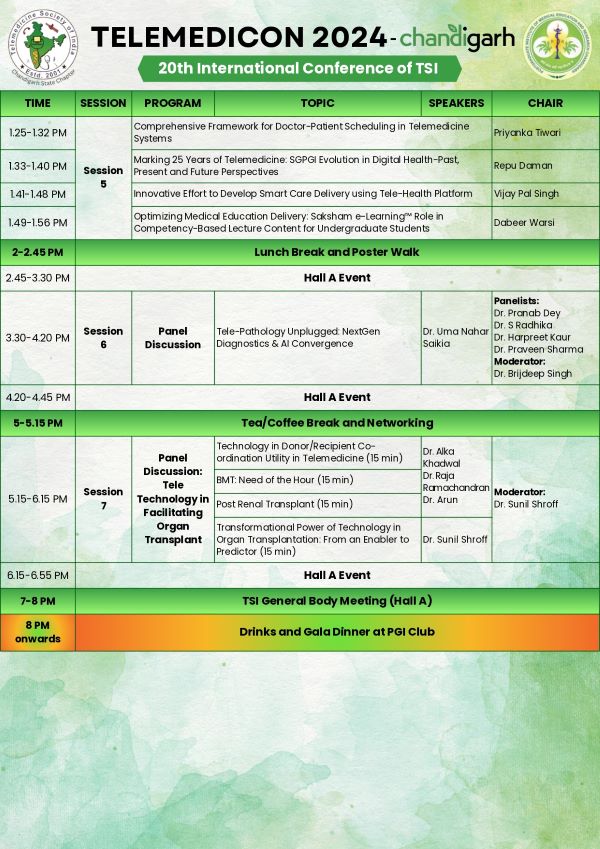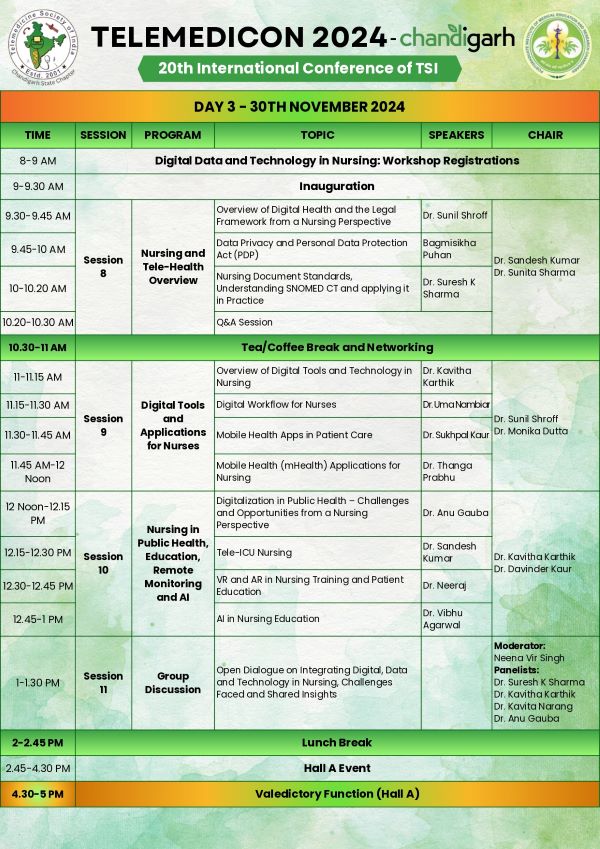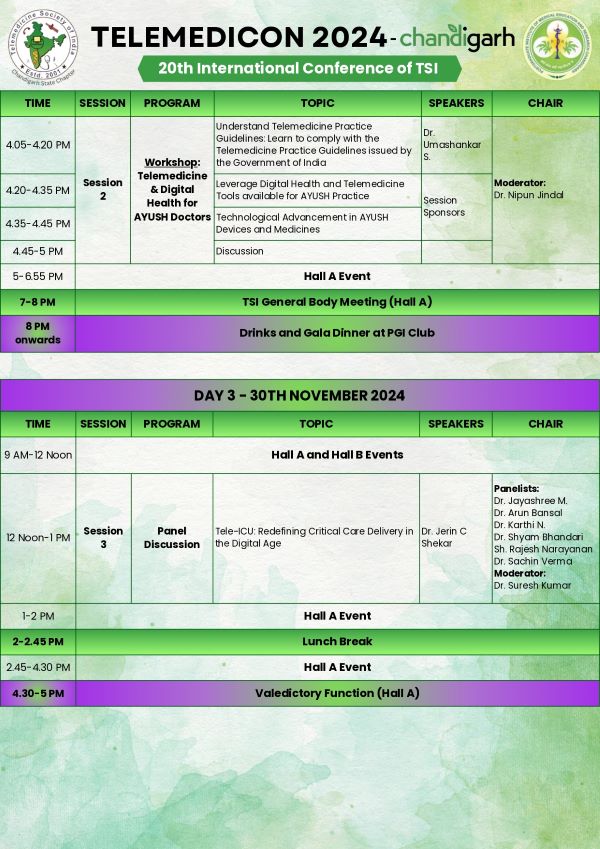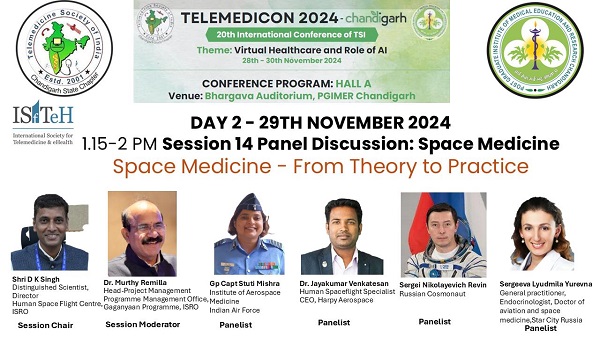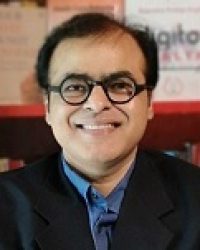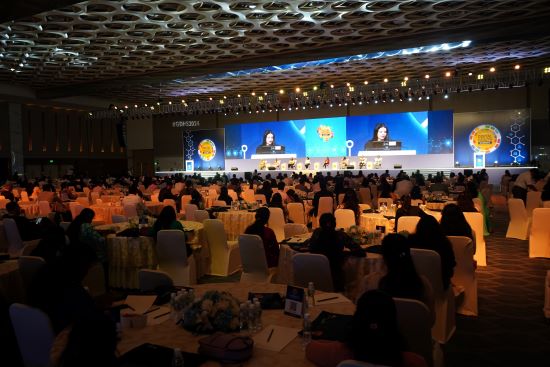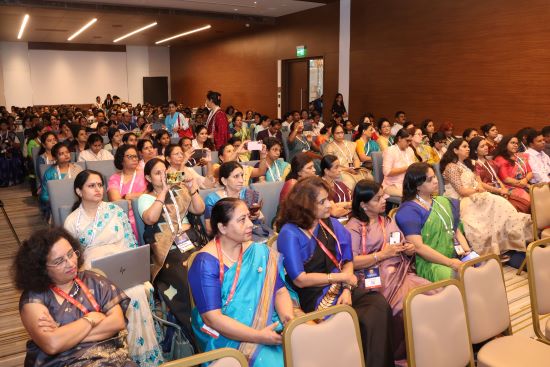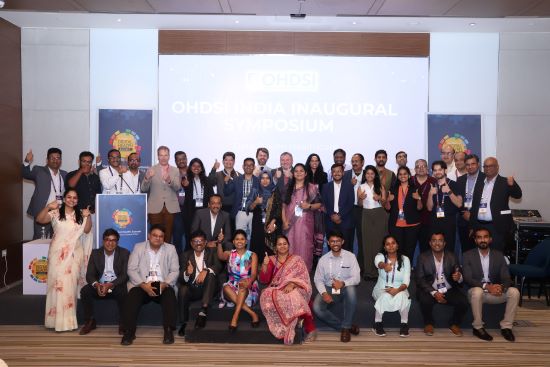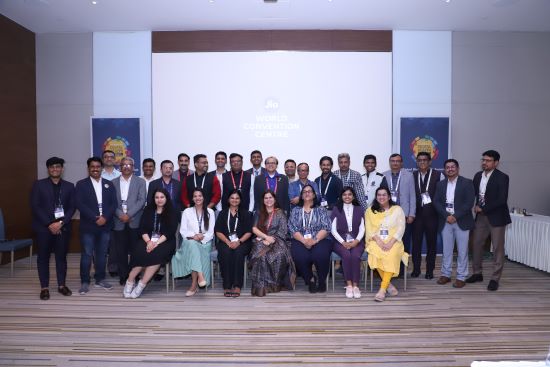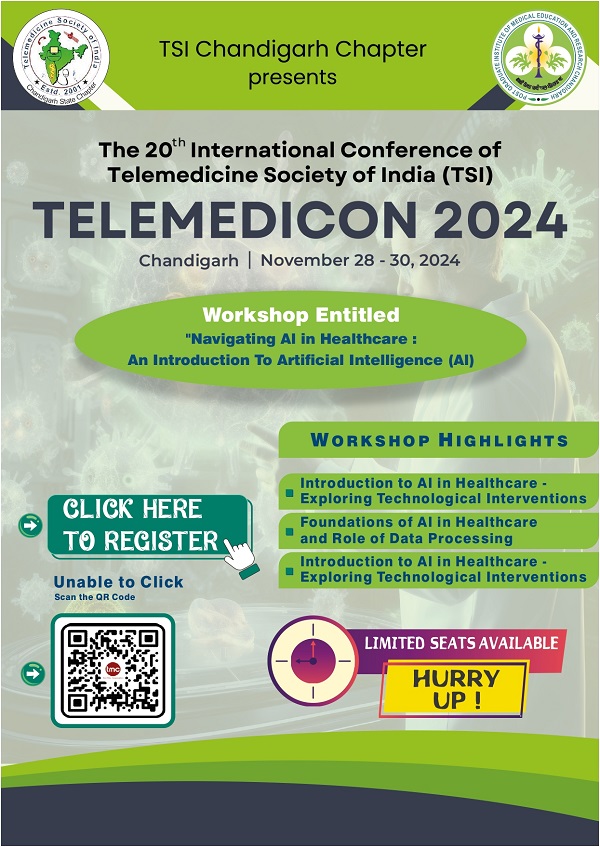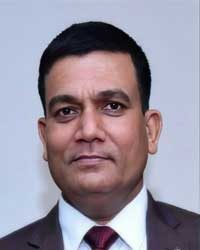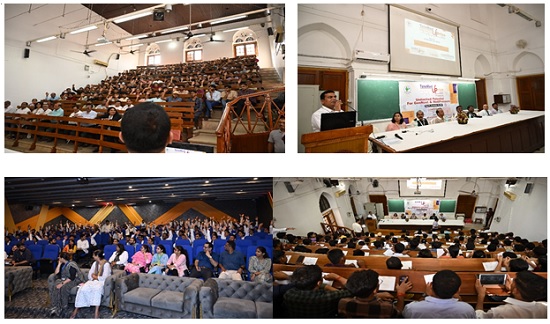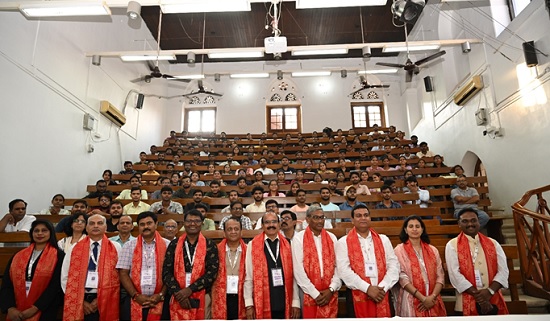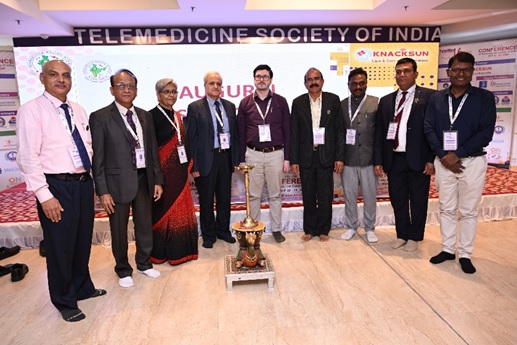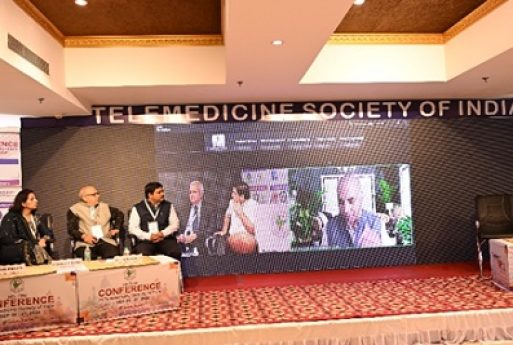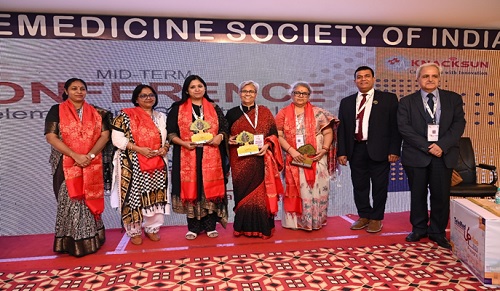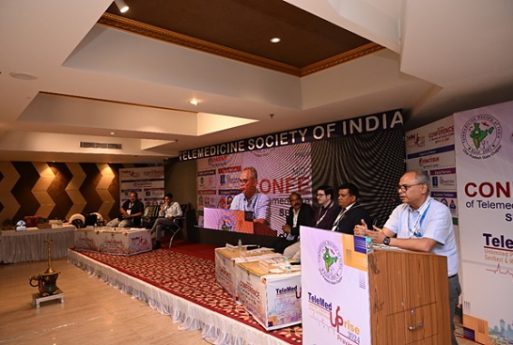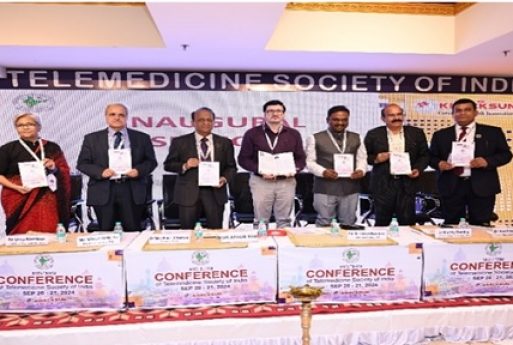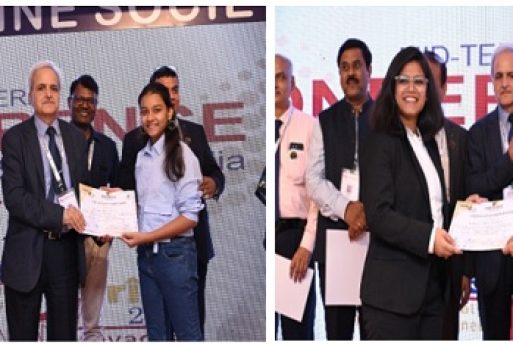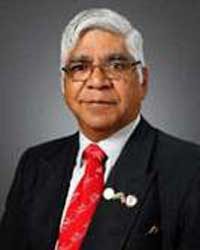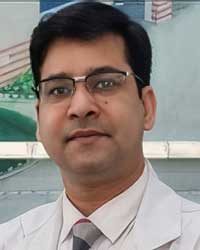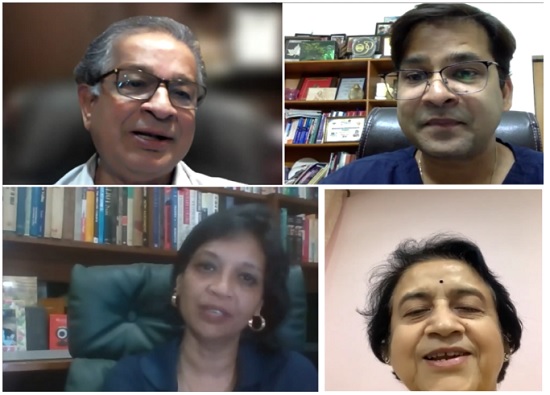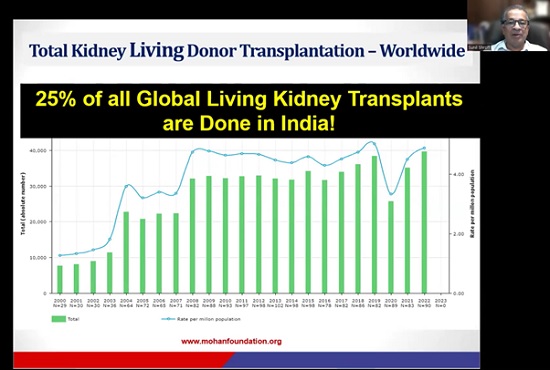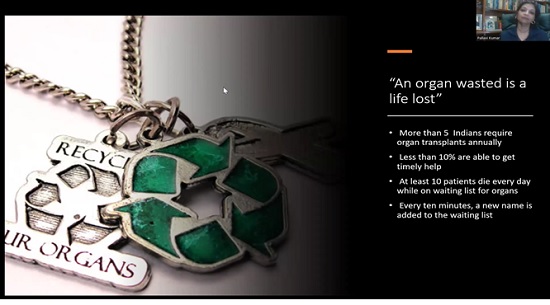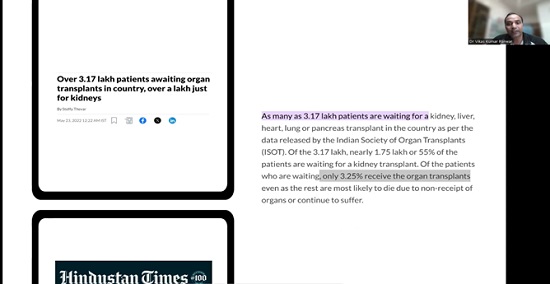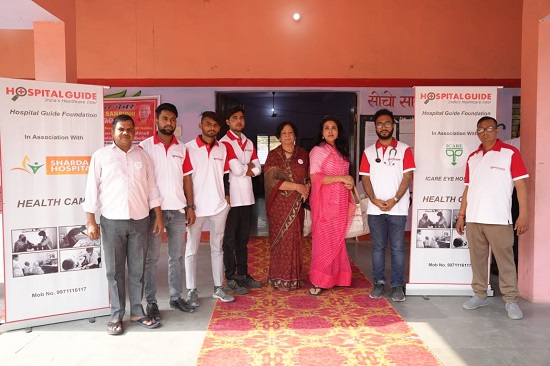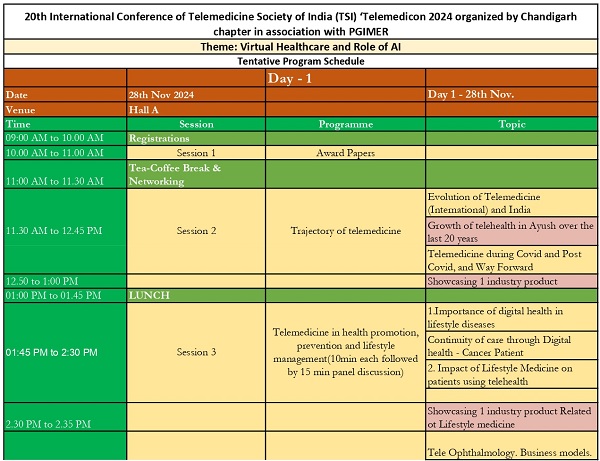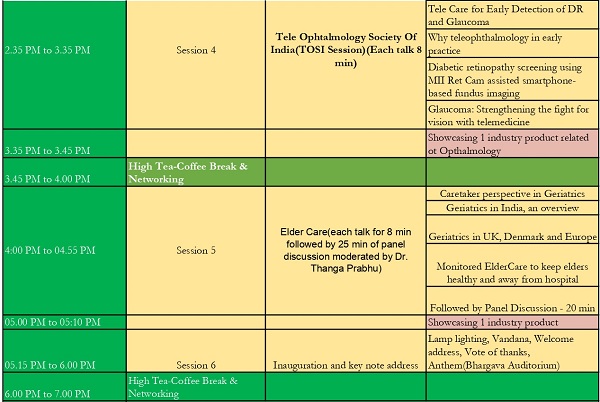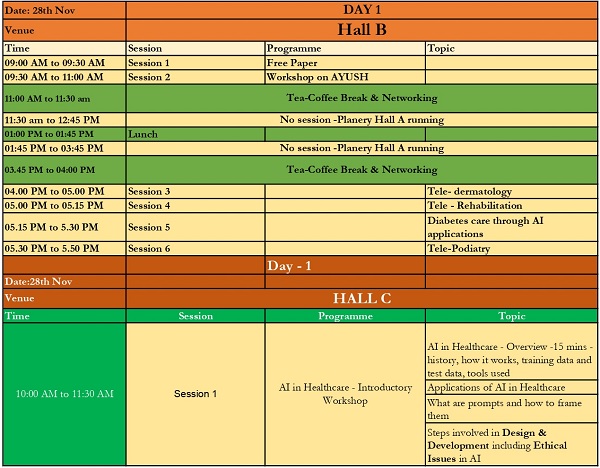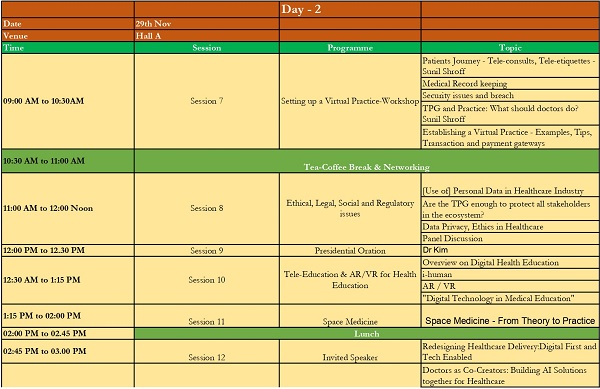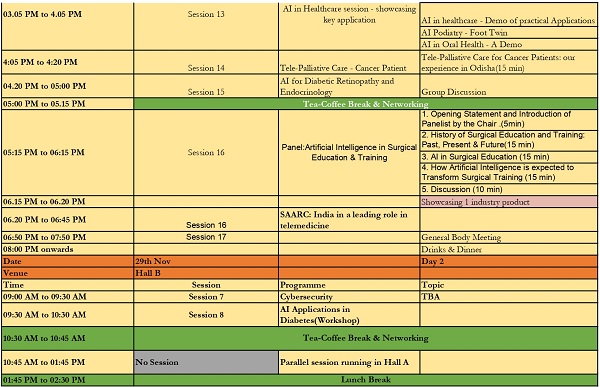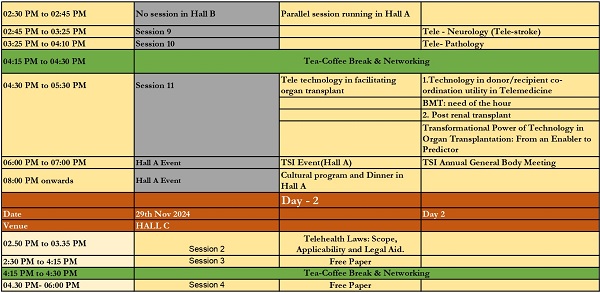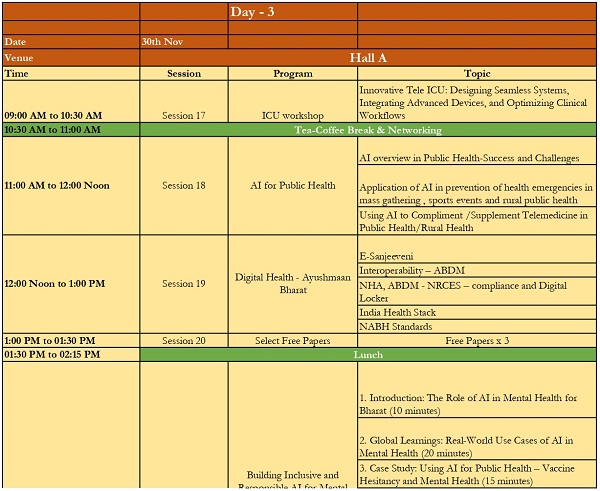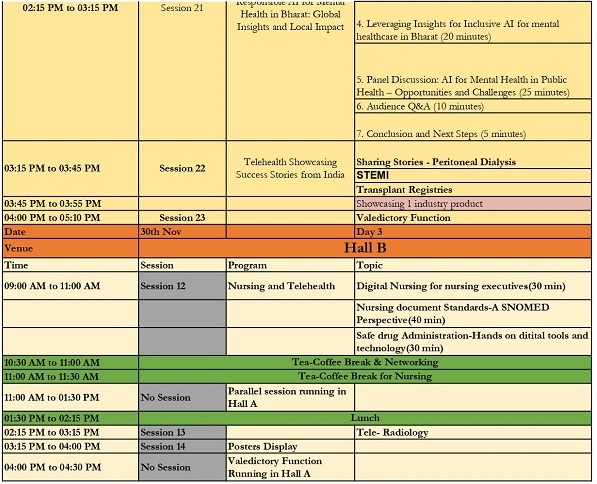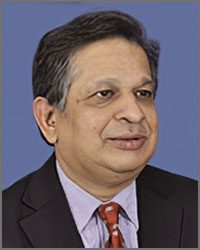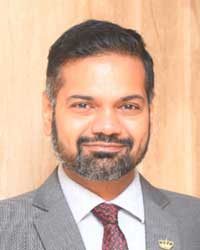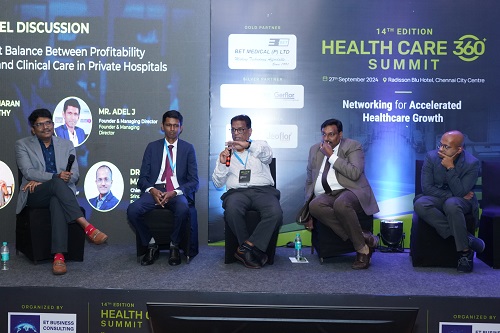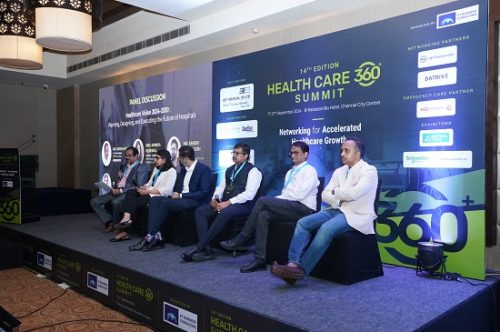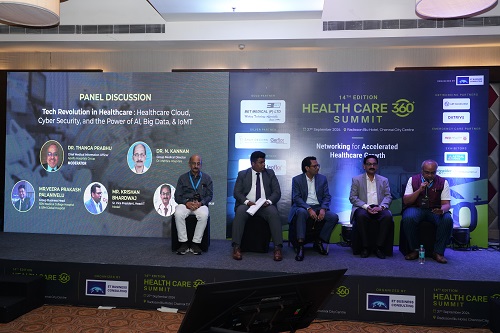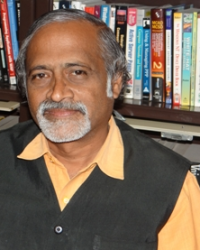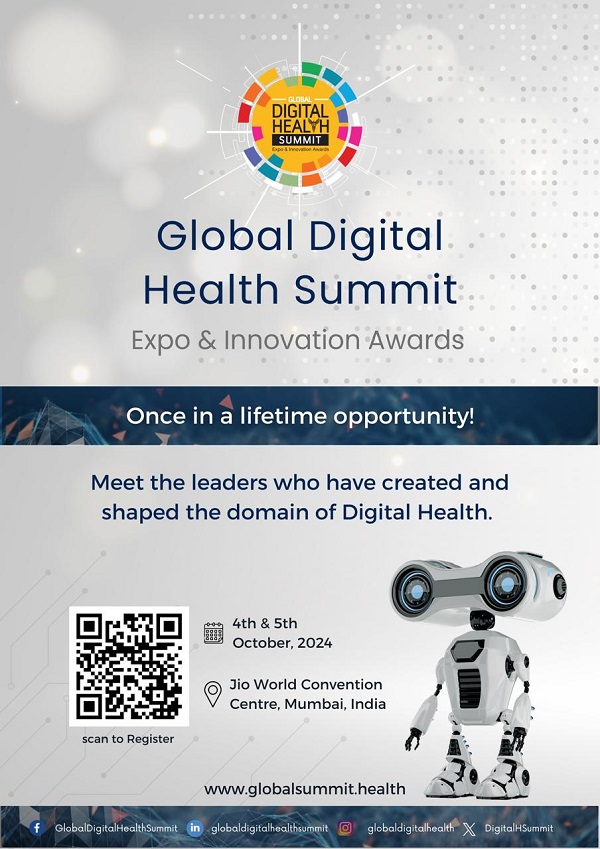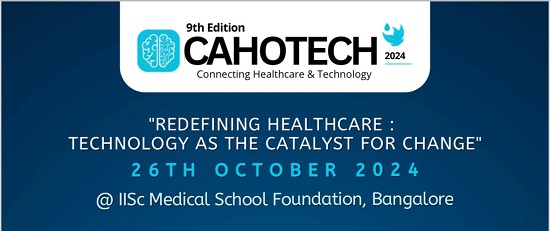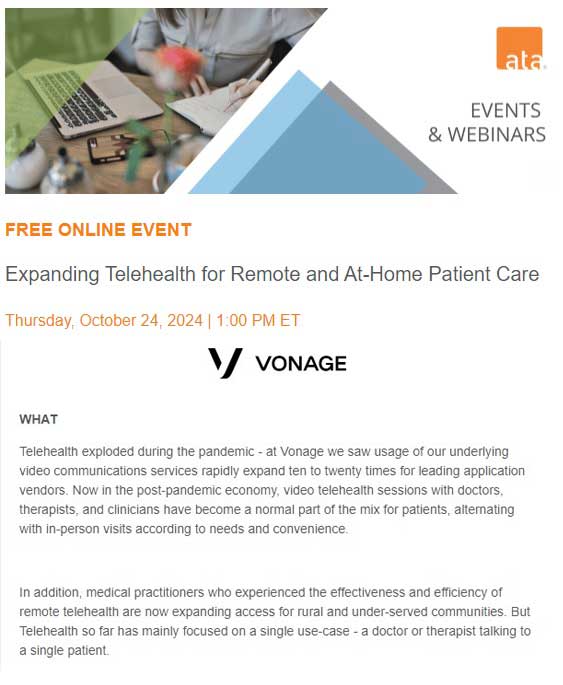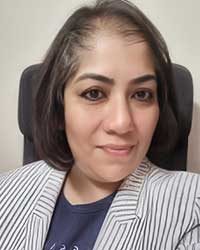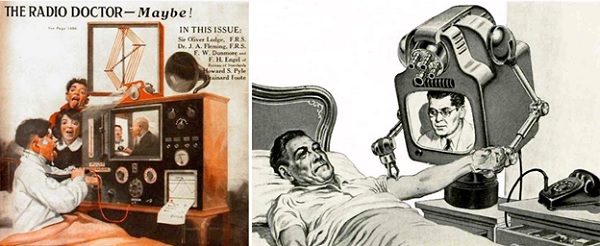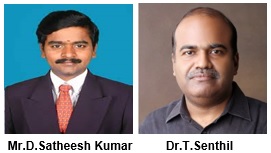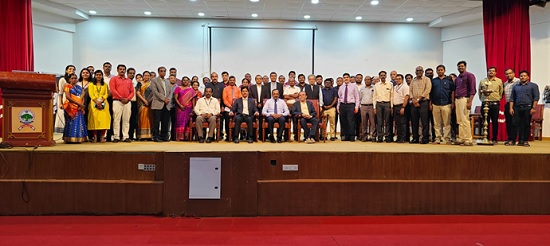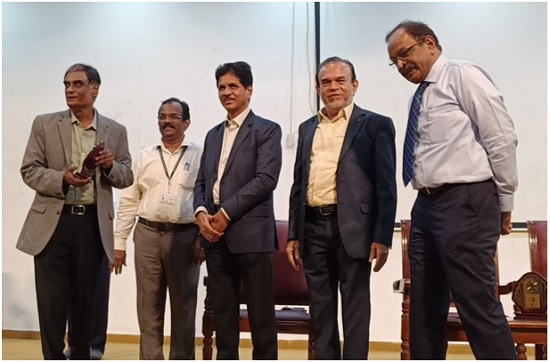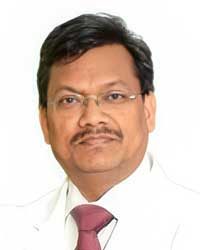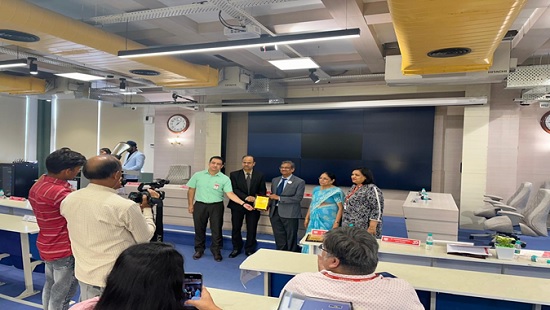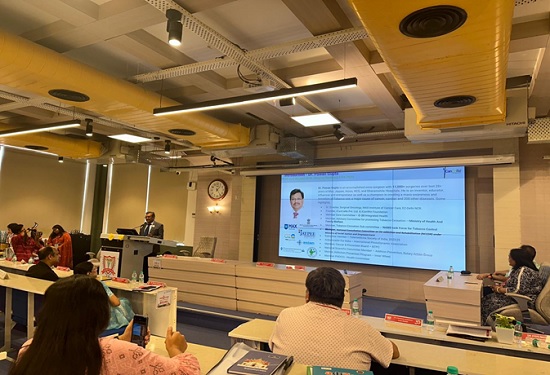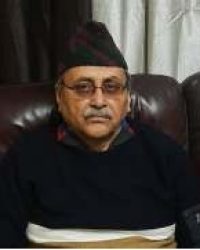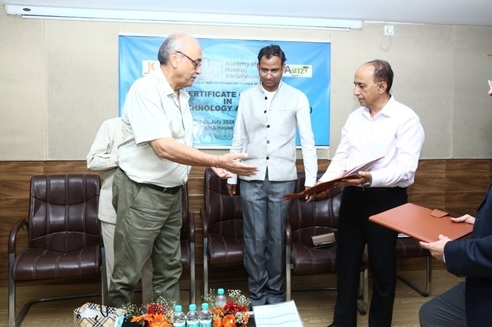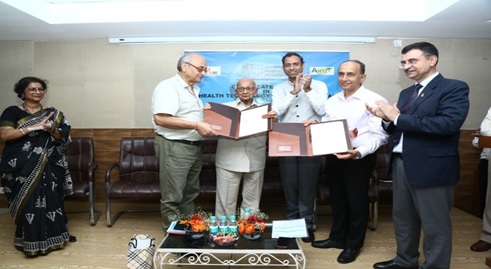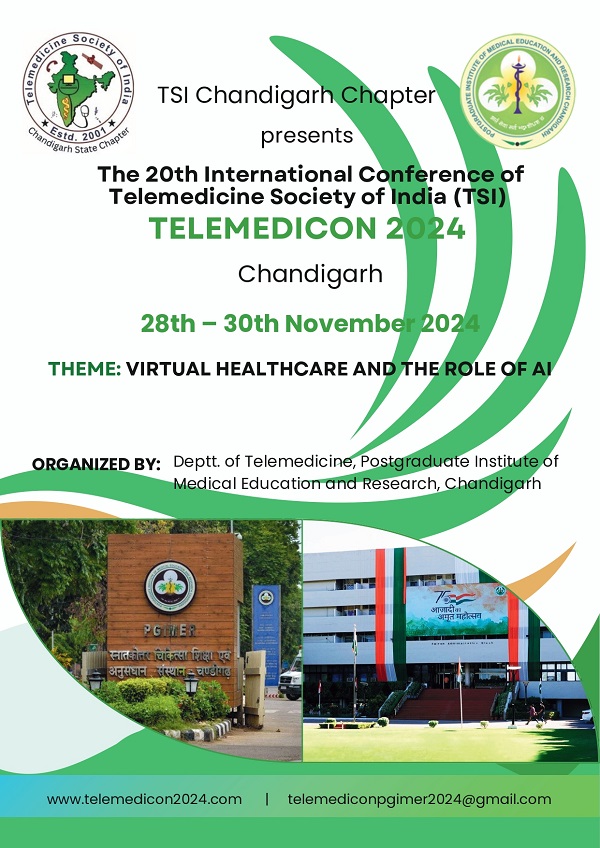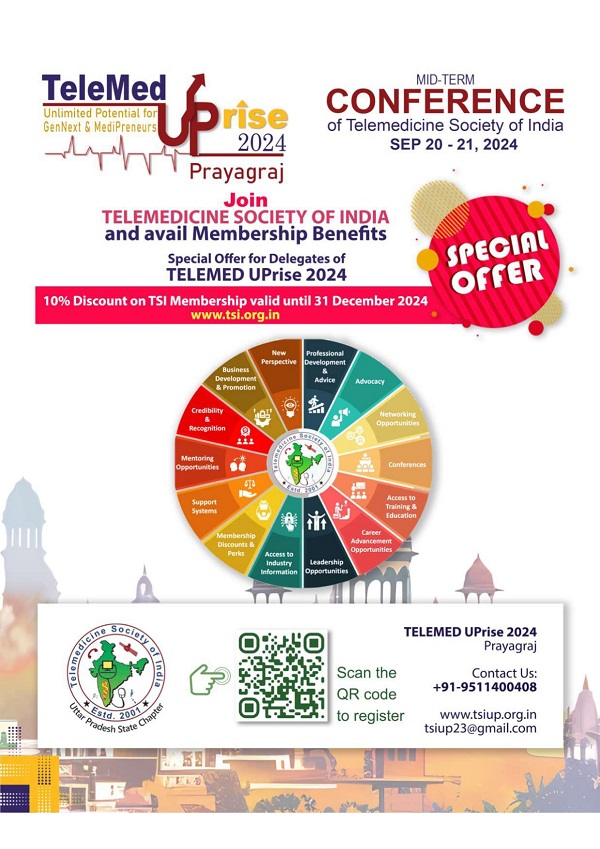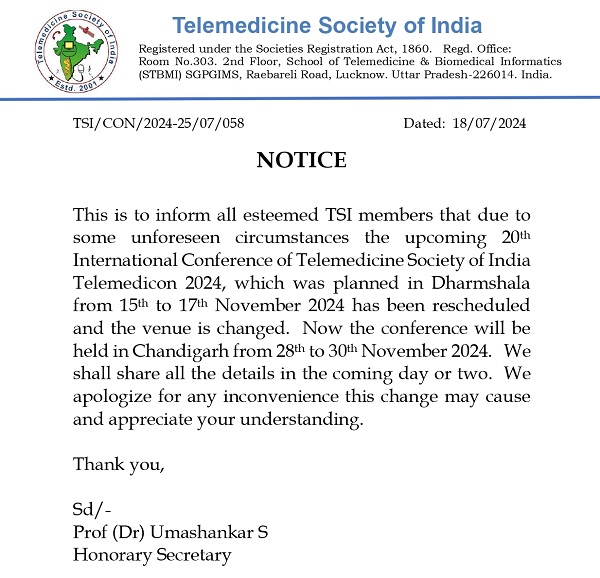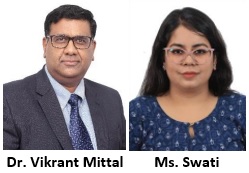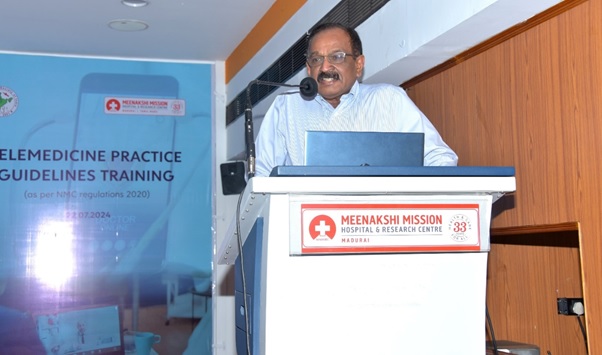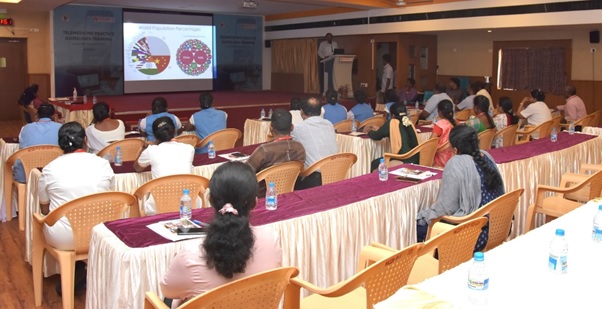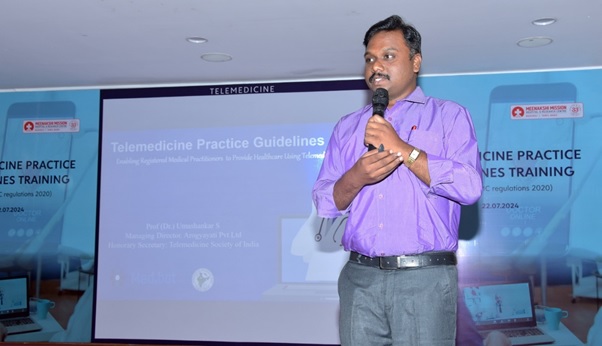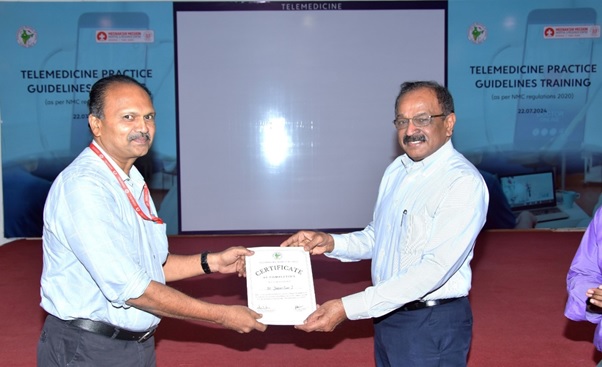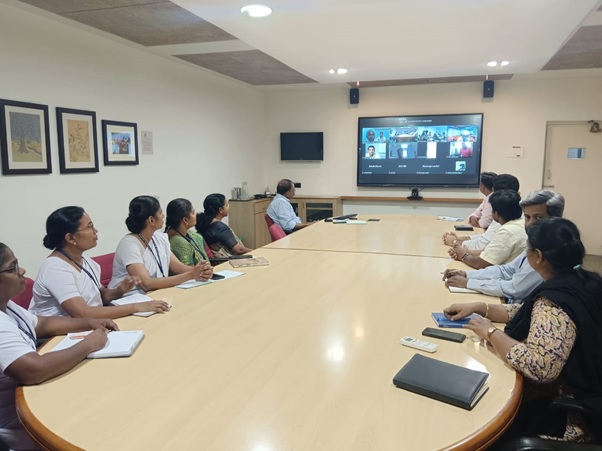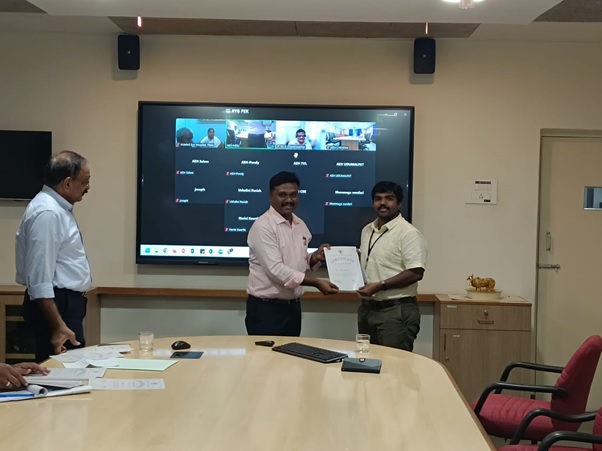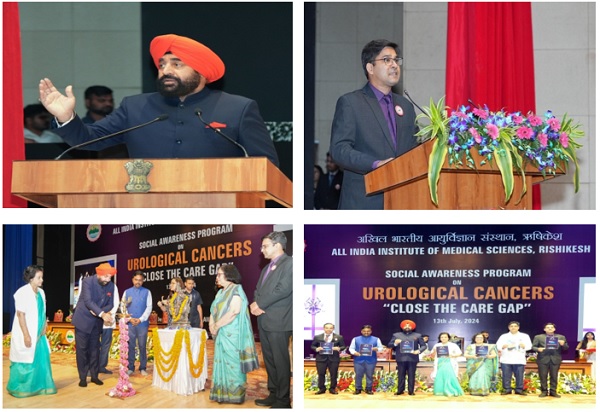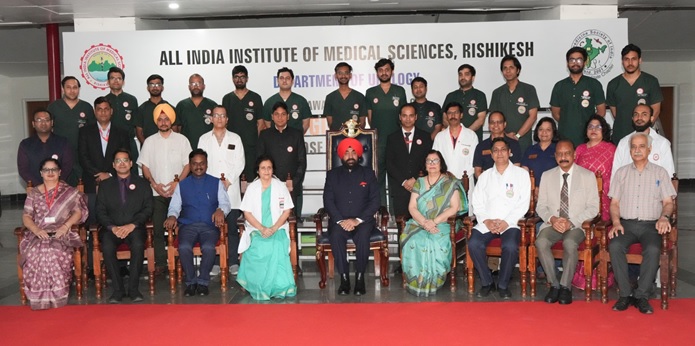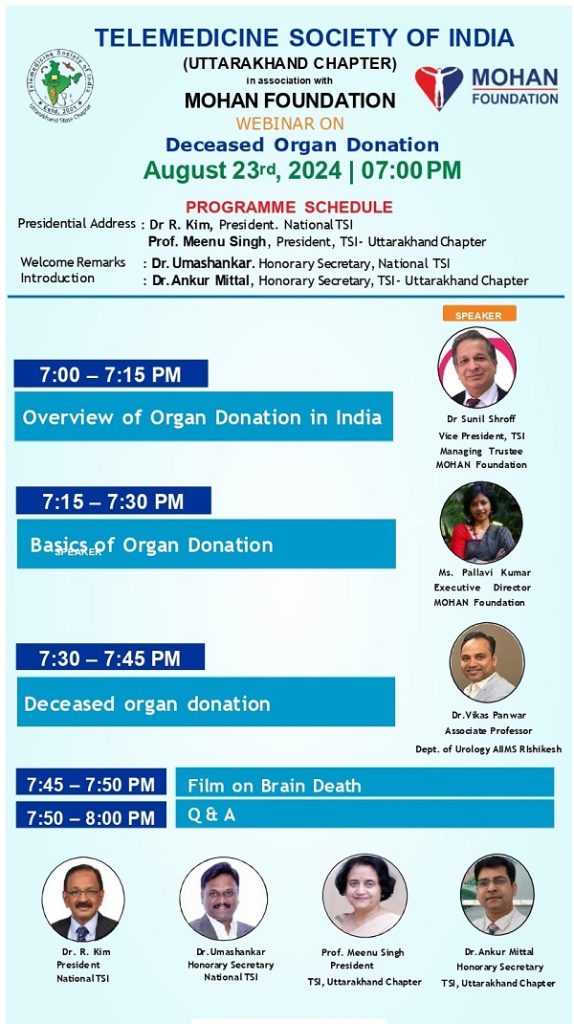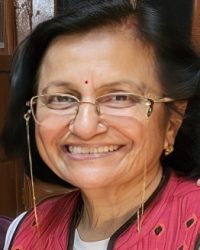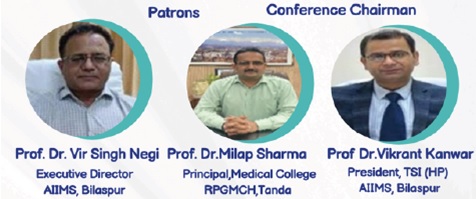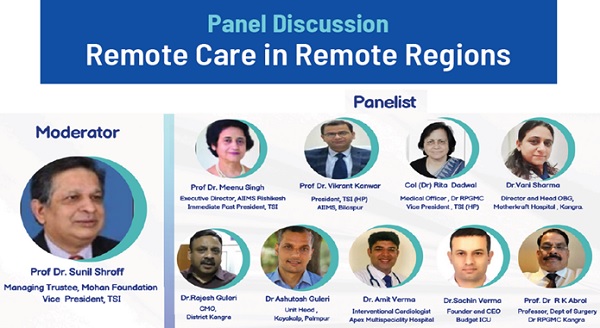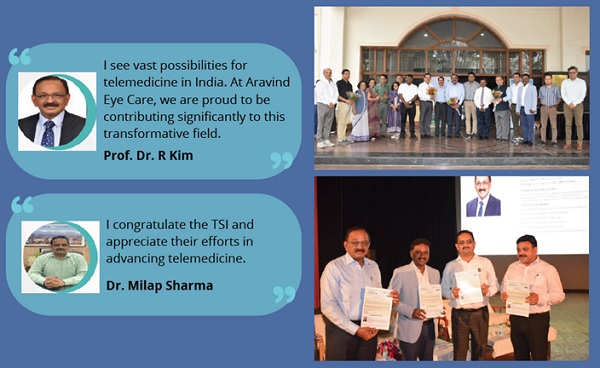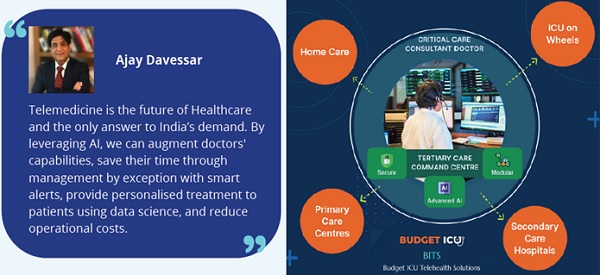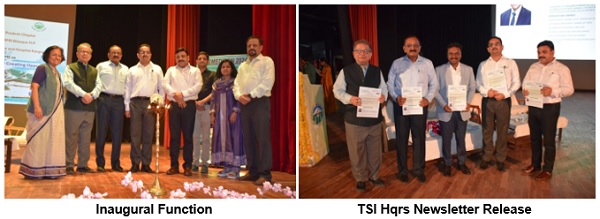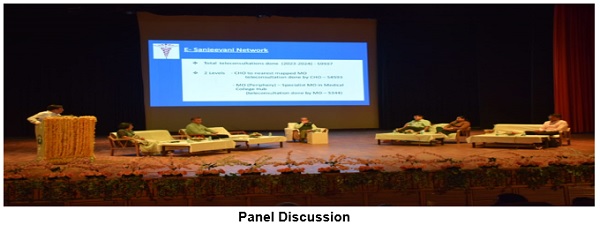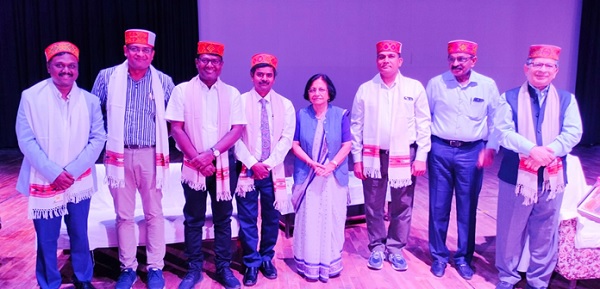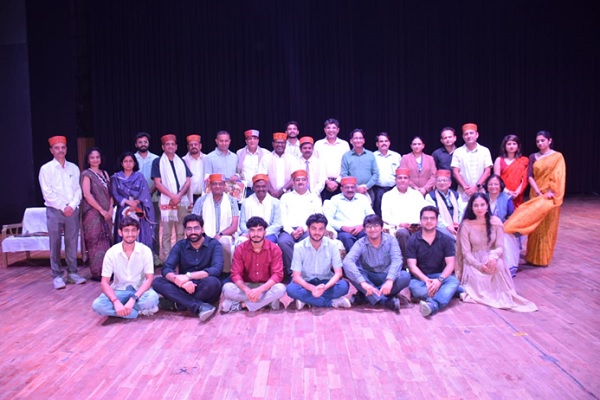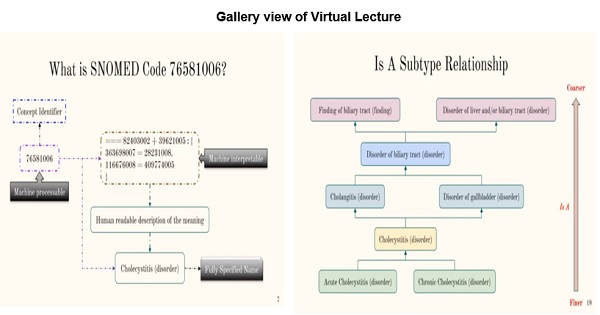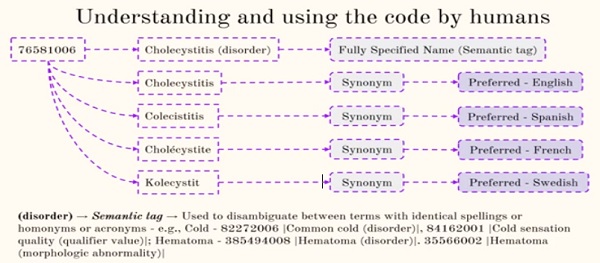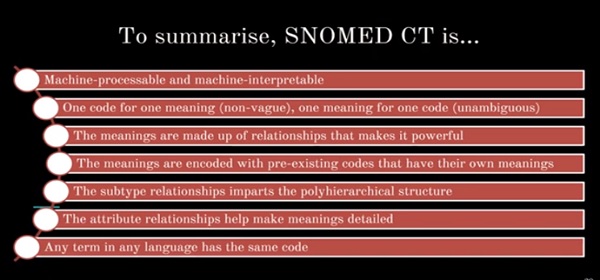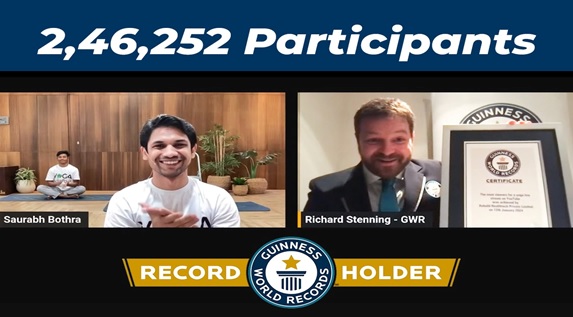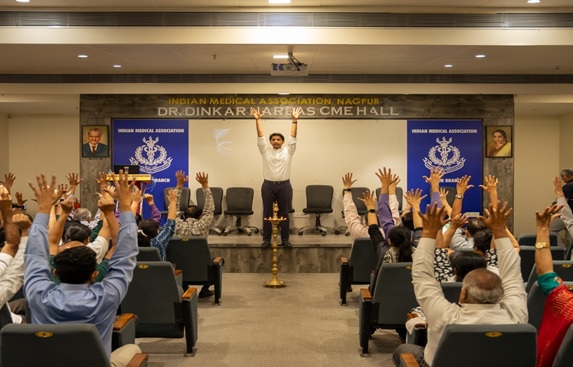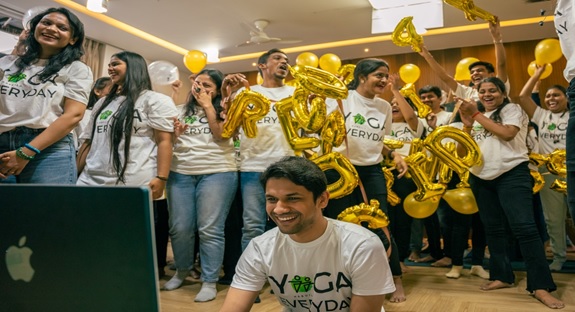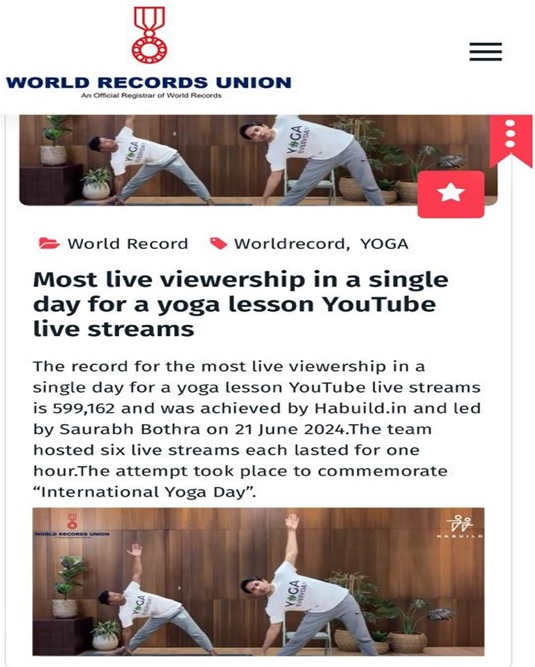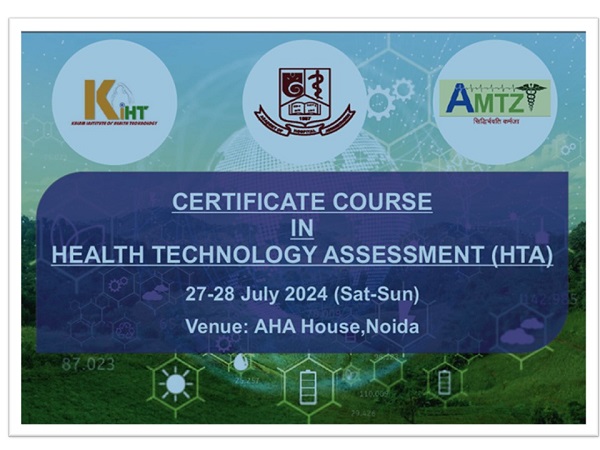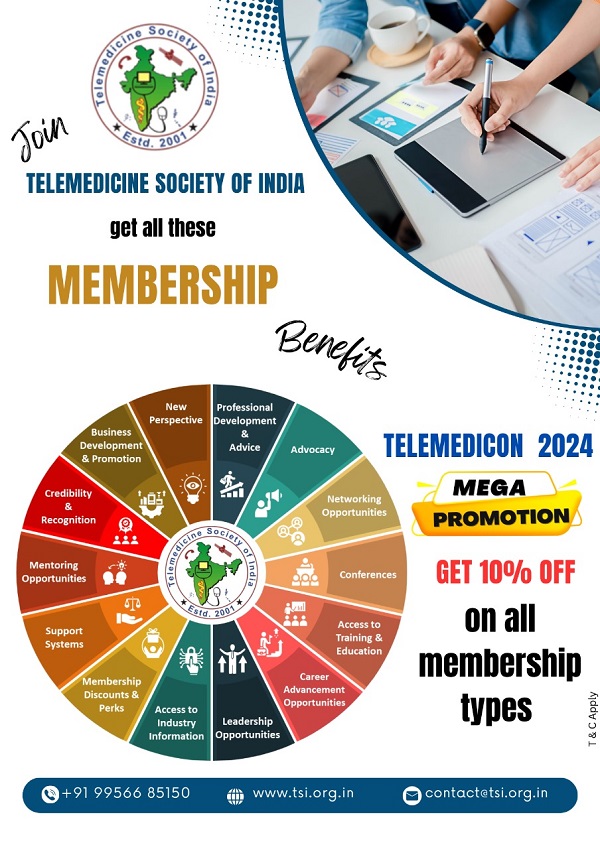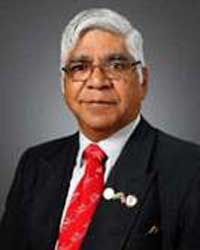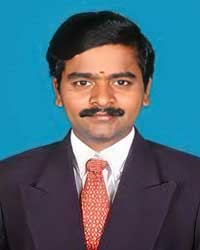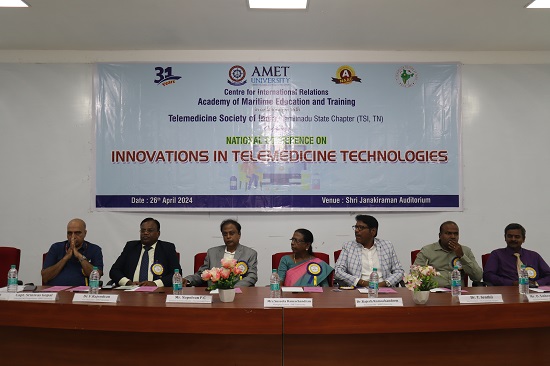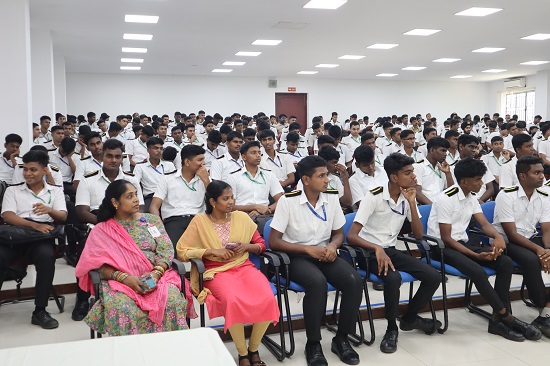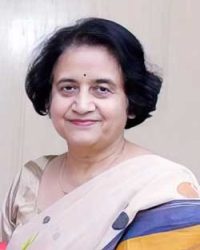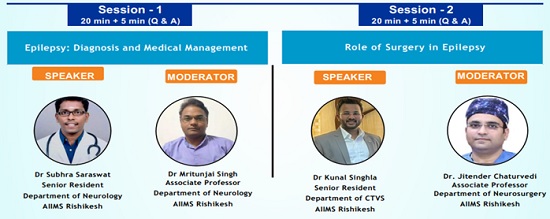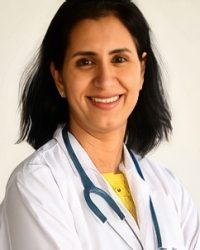Telehealth Newsletter
Official Newsletter of Telemedicine Society of India

What is New?
February saw Dr. Krishna Kumar, our Treasurer, putting in remarkable efforts to promote telehealth at the Kumbh Mela in Prayagraj. Dr. Umasankar and Dr. Murthy visited him, offering their valuable support during this significant initiative. Aside from this, there were no major activities to report for the month.
This issue features three engaging articles that delve into important topics shaping the future of healthcare:
- “The Future of Healthcare: Game-Changing Trends in 2025” by Dr. Pavithra explores the innovative trends and technologies poised to transform the healthcare landscape in the coming years.
- “AI-Enabled Wearable Sensor Uses Vibration to Curb Nocturnal Scratching” by Dr. Preethi introduces a cutting-edge wearable sensor designed to address nocturnal scratching, offering a promising solution for individuals with skin conditions.
- “New HIPAA Guidelines Set to Improve Cybersecurity in Healthcare” by Naina discusses the latest updates to HIPAA regulations aimed at enhancing cybersecurity measures within the healthcare sector.
These articles provide valuable insights into the evolving landscape of healthcare, highlighting the role of technology and new regulations in shaping the industry’s future.
Thank You
Dr. Sunil Shroff
Chief Editor
President-Elect, TSI
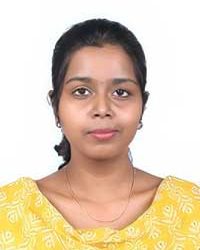
Future of Healthcare: Game Changing Trends in 2025
Dr. Pavithra S
Assistant Editor, Medindia.net
As we look ahead, the healthcare industry is on the brink of a transformative era. Rapid advancements in technology, patient engagement, and operational efficiency are set to redefine how care is delivered. Here are some distinct trends that will shape the future of healthcare.
Personalized Medicine: Tailoring Treatment to the Individual
In 2025, personalized medicine will become a cornerstone of patient care. Advances in genomics and biotechnology will enable healthcare providers to develop treatments tailored to individual genetic profiles and health histories. This approach will not only enhance the effectiveness of treatments but also minimize adverse side effects. Patients will receive customized care plans that consider their unique biological makeup, leading to improved outcomes and higher satisfaction rates.
Telehealth Expansion: Bridging Gaps in Access
The COVID-19 pandemic accelerated the adoption of telehealth, and by 2025, it will be an integral part of healthcare delivery. Virtual consultations will become the norm, allowing patients to access care from the comfort of their homes. This trend will be particularly beneficial for individuals in rural or underserved areas, where access to specialists is limited. Enhanced telehealth platforms will incorporate advanced features such as remote monitoring and AI-driven diagnostics, making healthcare more accessible and efficient.
Data Interoperability: Seamless Information Sharing
As healthcare systems become increasingly digitized, the need for data interoperability will be paramount. By 2025, healthcare providers will prioritize the integration of electronic health records (EHRs) across different platforms. This seamless sharing of patient information will facilitate coordinated care, reduce duplication of tests, and enhance clinical decision-making. Patients will have greater control over their health data, allowing them to share relevant information with multiple providers easily.
Mental Health Integration: Prioritizing Emotional Well-Being
Recognizing the importance of mental health, healthcare providers will increasingly integrate mental health services into primary care settings by 2025. This holistic approach will ensure that mental health is treated with the same urgency as physical health. Providers will utilize screening tools to identify mental health issues early and offer comprehensive treatment options, including therapy and medication management. This trend will help destigmatize mental health care and promote overall well-being.
Sustainable Healthcare Practices: A Greener Future
As awareness of environmental issues grows, the healthcare sector will adopt more sustainable practices by 2025. Providers will focus on reducing waste, utilizing eco-friendly materials, and implementing energy-efficient technologies in healthcare facilities. Telehealth and remote monitoring will also contribute to sustainability by reducing the carbon footprint associated with patient travel. This commitment to sustainability will not only benefit the planet but also enhance the reputation of healthcare organizations as socially responsible entities.
The future of healthcare is poised for significant change, driven by personalized medicine, telehealth, data interoperability, mental health integration, and sustainable practices. As these trends unfold, healthcare providers must adapt to meet the evolving needs of patients and the healthcare landscape. By embracing these innovations, the industry can create a more efficient, accessible, and compassionate healthcare system that prioritizes the well-being of all individuals.

AI-Enabled Wearable Sensor Uses Vibration to Curb Nocturnal Scratching
Dr. Preethi Balasubranamian, BDS
Associtae Editor, Medindia.net
Atopic dermatitis (AD) is a chronic inflammatory skin condition characterized by persistent itching and the itch-scratch cycle. Nocturnal scratching significantly disrupts sleep, leading to fatigue, stress, and worsening of symptoms. Traditional treatments focus on topical medications and systemic therapies, but a novel, nonpharmacological intervention has been developed to address nocturnal scratching through wearable technology. Researchers at Northwestern University have tested an AI-enabled wearable sensor that delivers vibratory feedback to reduce scratching episodes.
The Itch-Scratch Cycle in Atopic Dermatitis
The itch-scratch cycle is a hallmark of atopic dermatitis. Scratching an itchy site induces inflammation, which exacerbates itchiness, leading to further scratching. This cycle is particularly problematic during sleep when individuals may not be conscious of their scratching behavior. Nocturnal scratching not only worsens skin lesions but also affects sleep quality, contributing to physical and psychological distress.
AI-Driven Wearable Sensor: Concept and Development
Previous studies validated an AI-enabled wearable sensor (ADAM sensor, developed by Sibel Health) capable of detecting nocturnal scratching. The new study introduced a vibratory feedback mechanism to evaluate its potential as a nonpharmacological intervention. The sensor aims to provide real-time feedback to interrupt scratching behaviors without disturbing overall sleep.
The study, titled Artificial Intelligence–Enabled Wearable Devices and Nocturnal Scratching in Mild Atopic Dermatitis, was published in JAMA Dermatology. It was conducted as a single-arm, two-stage cohort trial at Northwestern University’s Department of Dermatology.
- Ten adult participants (aged 18 or older) with mild atopic dermatitis and moderate to severe nocturnal scratching were enrolled.
Disease severity was assessed using the Validated Investigator Global Assessment (vIGA) score.
Sensor Design and Functionality
- The device is a soft, flexible, dorsal hand-mounted sensor made of medical-grade silicone.
- It has wireless capabilities and an integrated haptic motor.
The vibratory feedback delivers 1.4G vibrations at 10,000 RPM upon detection of scratching.
Study Phases
- Baseline Monitoring (Week 1): Participants wore the device without vibratory feedback to record baseline nocturnal scratching patterns.
- Intervention Phase (Week 2): The vibratory feedback mechanism was activated, providing alerts when scratching was detected.
Data was collected over 104 nights, accumulating 831 hours of sleep monitoring.
Key Findings and Results
- Reduction in Scratch Events: Mean nightly scratch events decreased by 28%, from 45.6 to 32.8 events.
- Reduction in Scratch Duration: The average per-hour scratch duration decreased by 50%, from 15.8 seconds to 7.9 seconds.
- Sleep Quality: No significant changes were observed in total sleep opportunity.
User Experience: Most participants reported the device as comfortable and easy to use, expressing interest in further development.
Possible Mechanisms of Action
The AI-enabled wearable sensor may reduce scratching through two primary mechanisms:
- Disrupting Automated Scratching: Many nocturnal scratching events occur subconsciously. Vibratory feedback may serve as a sensory disruption, preventing automatic scratching.
- Providing Counter-Stimulation: The vibration may act as a mild alternative stimulus, reducing the need for scratching by providing sensory relief.
The AI-enabled wearable sensor with vibratory feedback represents a novel, non pharmacological approach to managing nocturnal scratching in atopic dermatitis. By leveraging artificial intelligence and haptic feedback, this device shows potential in improving sleep quality and reducing scratching behaviors. Continued research and refinement could pave the way for wider clinical applications, offering relief to individuals suffering from chronic pruritus.
Reference: Artificial Intelligence–Enabled Wearable Devices and Nocturnal Scratching in Mild Atopic Dermatitis
https://jamanetwork.com/journals/jamadermatology/fullarticle/2830109

New HIPAA Guidelines Set to Improve Cybersecurity in Healthcare
Naina Bhargava, MPharm (Master of Pharmacy)
Content Writer, Medindia.net
The Department of Health and Human Services (HHS), through its Office for Civil Rights (OCR), has introduced a proposed rule to update the HIPAA (Health Insurance Portability and Accountability Act) Security Rule for the first time since 2013. The suggested changes would mandate health plans, healthcare clearinghouses, and insurance companies to enhance cybersecurity safeguards for electronic protected health information (ePHI). These updates would affect most healthcare providers and their business associates.
“As legitimate ways to access PHI continue to evolve, so do the illegal methods,” said Hoala Greevy, founder and CEO of Paubox, a HIPAA-compliant communication and marketing company for healthcare organizations. “Therefore, the HHS OCR must also update its policies to protect lawful access to PHI while addressing unlawful activities.”
Rising Cybersecurity Threats in Healthcare
Cyberattacks are increasingly affecting the healthcare sector, with ransomware and hacking incidents on the rise. The number of patients impacted each year has surged dramatically. In 2023, over 167 million individuals were affected by major breaches, setting a new record. Since 2019, hacking-related breaches have increased by 89%, and ransomware attacks have risen by 102%.
New Mandates for Documentation and Policy Updates
The proposed rule aims to amend the HIPAA Security Rule, requiring health plans, healthcare clearinghouses, most healthcare providers, and their business associates to enhance protection of patients’ ePHI from both external and internal threats. It will provide clearer and more specific guidelines on what covered entities and their BAs must do to secure ePHI. The updates will mandate that policies and procedures be documented, regularly reviewed, tested, and updated.
“It’s time for an update to the HIPAA Security Rule,” said Greevy. “A bold and controversial step would be to issue a guideline advising against the use of the Windows operating system by business associates and covered entities. For instance, there have been no documented cases of successful ransomware attacks on covered entities and BAs using systems other than Windows.”
The proposed update brings several important changes to help covered entities reduce risk. “All implementation specifications will become mandatory, removing the current distinction between ‘required’ and ‘addressable’ specifications,” said Jade Davis, JD, a law partner at Hall Booth Smith in Tampa, Florida, specializing in data privacy, cybersecurity, and artificial intelligence.
Aligning Definitions and Specifications with Current Technologies
The proposed changes would mandate entities to keep detailed written documentation of all Security Rule policies, procedures, and analyses. “Definitions and specifications will be updated to align with current technologies and terminology. Entities will also be required to maintain and update a technology asset inventory and network map annually, or after significant changes,” said Davis.
Risk assessments will now require a detailed analysis of technology assets, threats, vulnerabilities, and risk levels. The proposed changes also stipulate that any changes to employee access to ePHI must be reported within 24 hours. Incident and contingency planning will require entities to create plans for restoring systems within 72 hours, conduct criticality assessments, and regularly test incident response procedures, Davis explained.
“These updates mark significant progress, but the healthcare industry should see them as part of an ongoing process, not a one-time fix,” she said. “Technological advancements and emerging risks demand constant adjustments to ensure strong protection of patient data.”
Certification of Compliance by Business Associates and Subcontractors
Entities will be required to perform annual audits to ensure compliance with the Security Rule. Davis noted that business associates and subcontractors must certify compliance with technical safeguard requirements every year. “Encryption of ePHI, both at rest and in transit, will be mandatory, with a few exceptions,” Davis said. “While HHS’s efforts are commendable, more needs to be done to foster a proactive cybersecurity culture in healthcare. This includes increasing funding for cybersecurity initiatives and encouraging collaboration between the public and private sectors.”
The current proposal enhances security requirements for technical safeguards. Entities will be required to conduct vulnerability scans every six months, perform annual penetration tests, and carry out yearly security checkups to ensure their effectiveness.
Telemedicine – News from India & Abroad
Trusting AI in Healthcare: Survey Reveals Low Public Confidence
A study reveals that 65.8% of adults surveyed lacked trust in their healthcare system’s ability to use artificial intelligence…….. Read More
AI-Driven Genetics Paves the Way for Personalized Cancer Treatment
A study reveals how genetic mutations influence cancer treatment outcomes and introduces a machine learning tool for more personalized therapies………… Read More
AI’s Surge in Healthcare: Time to Address Environmental Concerns
GlobalData warns that healthcare companies may be overlooking their environmental responsibilities amid the growing emphasis on artificial intelligence…….. Read More
Could Artificial Intelligence Prevent Stillbirths?
A new AI-driven model revealed previously unknown risk factor combinations associated with severe pregnancy complications, including stillbirth……….. Read More
Telemedicine Practice Guidelines – A Foundation Course for RMPs by TSI Faculty
To know more about the Telemedicine Foundation Course click on the link below:
https://tsitn.org/tpg-course/
TSI invites all the TSI Chapters and Members to submit information on their upcoming Webinar or Events (50 words), News related to Telemedicine (200 words) or short articles (500 words) for the monthly e-newsletter.Guidelines for submission to TSI Newsletter-
- Report can be from 500 to 600 words
- Report Should be relevant to Telemedicine or Medical Informatics
- No promotion of self or any product
- Avoid plagiarism
- All references should be included
- Provide any attributions
- Visuals are welcome including video links
- Send full authors name, degrees, affiliations along with a passport sized photograph of good resolution. If multiple authors only main author photo to be sent.
Submission may be sent to – tsigrouptn@gmail.com
Editors reserve the rights for accepting and publishing any submitted material.
Editor in Chief – Dr. Sunil Shroff
Editors – Dr. Senthil Tamilarasan & Dr. Sheila John
Technical Partner- https://www.medindia.net


